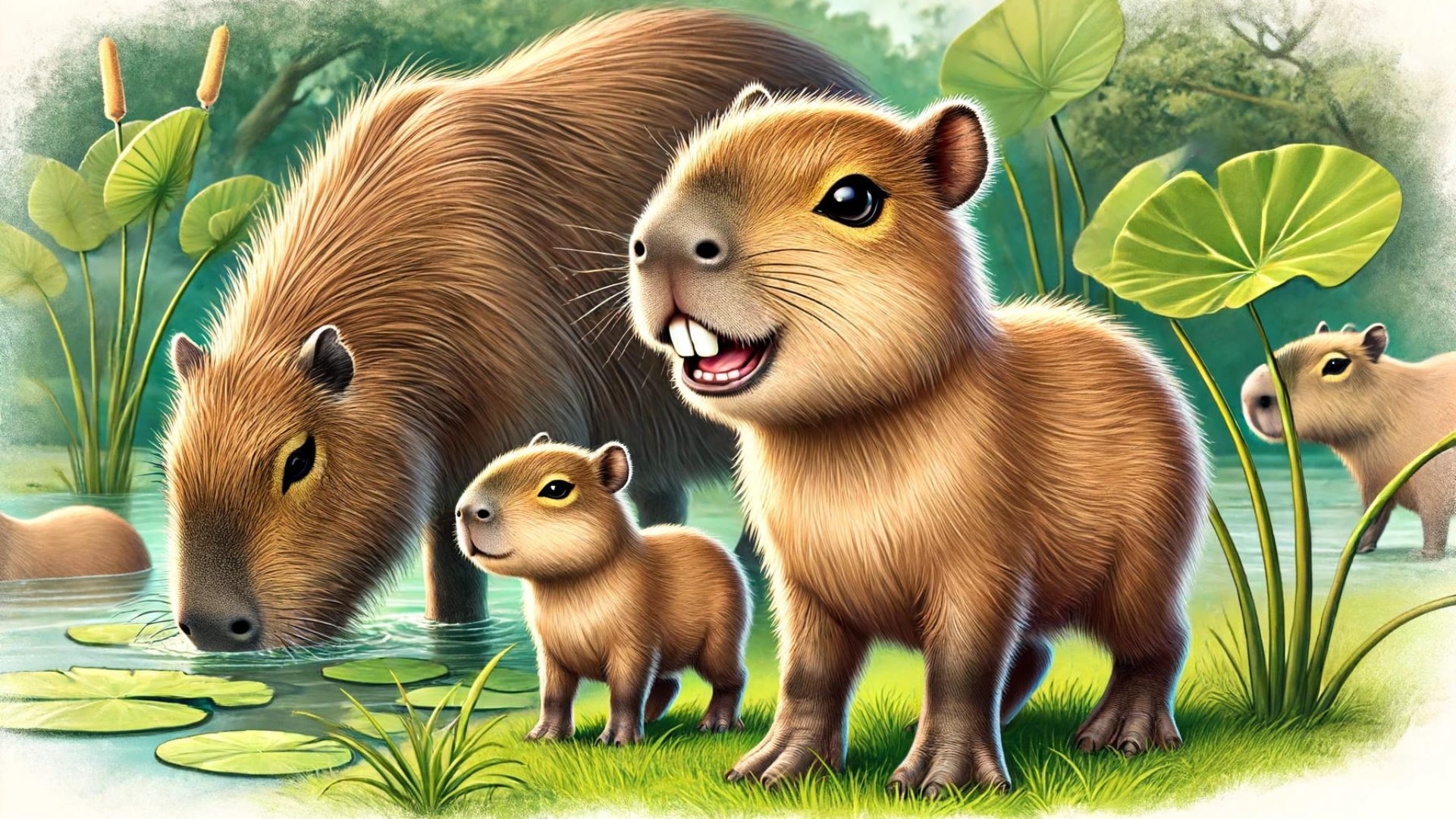Capybaras have a total of 20 teeth, comprising 4 sharp incisors, 4 premolars, and 12 molars. Their teeth are remarkably strong and sharp, essential for their herbivorous diet that includes grass, bark, and aquatic plants. Capybara teeth are continuously growing, a common trait among rodents. This continuous growth necessitates frequent chewing on hard materials to prevent overgrowth, which could impede their ability to eat properly.
Teeth of Baby Capybaras

Baby capybaras are born with their eyes open, fur, and a set of functional teeth, ready to graze alongside the adults. These early-developed teeth ensure that the young can start feeding immediately, contributing to their rapid growth and development.
Size and Structure of Capybara Teeth
Capybara incisors are fascinating in both size and function. These front teeth can grow over 8 centimeters if not naturally worn down by constant gnawing. This remarkable growth is essential for the capybara’s survival, as their diet requires extensive chewing. The incisors are uniquely structured with a hard enamel front and a softer dentine back, allowing them to self-sharpen with each bite, ensuring they remain effective tools for cutting through tough vegetation.
Beyond their impressive incisors, capybaras also have premolars and molars, commonly known as cheek teeth. These teeth have a distinct occlusal morphology, which is the pattern of the biting surface, that changes over time to optimize the grinding of their food. This adaptation is crucial for their herbivorous diet, allowing them to efficiently process a variety of plant materials.
Why Are Capybara Teeth So Big?
The large size of capybara teeth is a result of their diet and the need to gnaw continuously. Their teeth must handle tough vegetation, which helps keep their incisors at a manageable length. Without this constant chewing, their teeth could overgrow, leading to malnutrition and other health issues.
Are Capybara Teeth Sharp?
Yes, capybara teeth are extremely sharp. Their incisors are chisel-shaped, allowing them to efficiently cut through tough plant materials. This sharpness is maintained through the natural process of grinding their teeth against each other.
Preventing Overgrowth
Capybaras prevent their teeth from overgrowing by chewing on a variety of hard materials, including stones and bark. In captivity, it’s crucial to provide them with appropriate materials to gnaw on, such as chew toys or safe branches, to mimic their natural behavior and maintain dental health.
Comparative Table
| Rodent | Number of Teeth | Incisor Length (cm) | Diet | Special Features |
|---|---|---|---|---|
| Capybara | 20 | Up to 8 | Grass, bark, aquatic plants | Continuously growing, self-sharpening |
| Nutria | 20 | 2-3 | Aquatic plants, roots | Orange-colored enamel |
| Beaver | 20 | Up to 6 | Wood, aquatic plants | Strong, sharp for gnawing wood |
| Rat | 16 | 1-2 | Grains, seeds, fruits | Can chew through metal |
| Mouse | 16 | 1-2 | Grains, seeds, fruits | Small but very sharp |
| Dog | 42 | N/A | Meat, dry food | Not continuously growing |
Conclusion
Capybara teeth are a remarkable adaptation that allows these giant rodents to thrive on a diet of tough vegetation. Their continuously growing teeth, which must be constantly worn down, highlight the importance of dental health in their overall well-being. Understanding capybara teeth not only provides insights into their biology but also underscores the care requirements for those who keep them as pets. By comparing capybara teeth with those of other rodents, we gain a deeper appreciation of the unique dental structures across different species.



